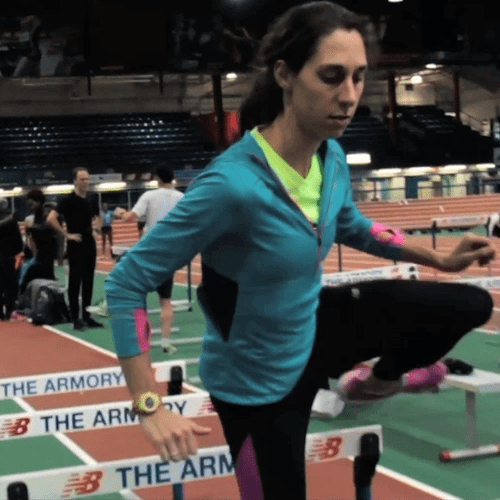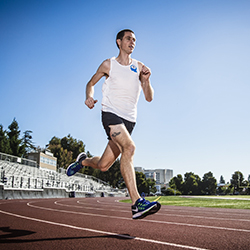Quality picks
- Non Gamstop Casinos
- Best Non Gamstop Casinos
- Casinos Not On Gamstop
- Casino Non Aams
- Casino En Ligne Français
- Non Gamstop Casino
- UK Online Casinos Not On Gamstop
- UK Online Casinos Not On Gamstop
- Migliori Siti Non Aams
- Non Gamstop Casino
- Casino Online
- Best Online Casino UK
- Non Gamstop Casino Sites UK
- Non Gamstop Casinos
- UK Online Casinos Not On Gamstop
- Migliori Siti Casino Non Aams
- Best Online Casino Sites UK
- Gambling Sites Not On Gamstop
- Casinos Not On Gamstop
- Casinos En Ligne
- UK Casinos Not On Gamstop
- Betting Sites UK
- Best New Uk Casinos Not On Gamstop
- Casino Non Aams
- Casino Online
- Meilleurs Sites De Paris Sportifs Belgique
- Bookmaker Non Aams
- Siti Scommesse Con Bitcoin
- 本人 確認 不要 カジノ
- Siti Di Scommesse
- 카지노 사이트.
- Casino Fiable En Ligne
- Casino En Ligne
- オンカジ おすすめ
- Meilleur Casino En Ligne De France
- Migliori Casino Bitcoin
APRIL 3RD 2014
BY COACH PATRICK HAMMOND
NO PAIN NO GAIN?
Why Prevention Rather than Treatment of Overtraining is More Beneficial to Long Distance Runners
Overtraining
The idea of “more is better” comes hand in hand with overtraining. Coaches who follow this philosophy begin to see their athlete’s times improve causing them to push the athlete even harder. However, an athlete can only handle so much before he or she stops adapting and begins to breakdown. One might think that the harder one trains the better they will become, but there is a limit to this method. When this idea is taken too far, overtraining may occur and the consequences can be dire for an athlete.
An athlete who is suffering from over-training syndrome has only one treatment option. Stop training or decrease it significantly for an extended period of time. For an athlete whose main goal is to reach their optimal performance level, this change in training may cause some issues. For instance, an athlete may become confused if they are under the impression that the harder they work, the better they will become. Also, an athlete could become bored because they are unaware of what to do if they cannot train. This boredom could lead to depression because they may see each day they do not train as another step away from their performance goal. With this being said, the focus should perhaps be more about preventing overtraining syndrome as opposed to treating it.
According to a 2006 study on treating overtraining syndrome, little can be done once overtraining is diagnosed. For that reason, this post will focus on a compilation of possible steps one can take to prevent overtraining syndrome. First, I will examine periodization training. Through periodization training, an athlete’s training is precisely rotated between hard, medium, and easy phases. When executed correctly, periodization should allow an athlete to push themselves out of their comfort zone, but not to the point of overtraining.
Periodization
Currently, the majority of the research done on excessive training has been conducted with swimmers. The results, however, can be appropriately applied to other sports. Because long term excessive training can lead to overtraining syndrome it is important to understand what is excessive. For example, it has been the conclusion of many studies that there are no significant differences in performance between athletes with normal training volumes and those with twice said volume. Such data suggests that training at higher volumes may only increase one’s chances of overtraining. Furthermore, performing high intensity training for too long can also lead to overtraining syndrome.
But for athletes to improve they must overload themselves or push themselves beyond a normal level, while incorporating recovery time. This is known as overreaching. Overreaching is similar to overloading because it involves a deliberate increase in training followed by significant rest. When completed properly, overreaching can result in a brief decrease in performances followed by a marked increase in performance. If overreaching is prolonged for too long or insufficient recovery is given, overreaching becomes overtraining.
Periodization is an excellent way to prevent overtraining from taking place as it will gradually cycle between training specificity, volume and intensity to achieve an optimal level of performance. A periodization program is often made up of one macrocylce, which is equal to one year. The macrocylce is then broken down into mesocycles, which last about twelve weeks and consist of a preparation, precompetition, competition, and active rest period.NutritionA weak immune system could be a potential factor in the development of overtraining syndrome. Eating foods that promote a healthy immune system could, therefore help prevent overtraining syndrome. Foods like leafy greens, fruits, and certain nuts have all been found to improve immune functioning. In addition, research suggests that athletes who eat a plant based, whole foods diets and avoid processed foods and meat are less likely to suffer immune dysfunction.
Eating a plant based, whole foods diet may also help in recovery. For example, foods can either be high-net-gain or low net-gain. High-net-gain foods are beneficial because they provide the body with energy even after digestion has taken place. This extra energy can in turn be used for performance or recovery depending on which is needed. High-net-gain foods include pseudograins, leafy vegetables, fruits, seeds, nuts, and beans. Low-net-gain foods include processed foods like cereal, white bread, and refined sugar as well as meats.One important element found in plants that can help with recovery and performance is chlorophyll. Chlorophyll is like a plants blood and when consumed it helps remove toxins, aids in cell regeneration, improves the flow of oxygen, and decreases recovery time. In other words a person’s body does not have to use as much energy to fight off toxins, rebuild cells, transport oxygen, and recover from exercise. Vegetables like dinosaur kale, spinach, bok choy, red leaf lettuce, and butter lettuce, to name a few, are packed with chlorophyll.
Foods that are alkaline or base forming will also aid in recovery, because an athlete’s body will not have to use as much energy to maintain homeostasis. Foods like meats, refined sugars and flours, processed foods, and dairy are all acid forming. Such foods, as well as stress, can increase the acidic level of one’s body and force it to work hard to maintain homeostasis. If one eats plant based whole foods that are alkaline forming, the energy that would have been used for maintenance can instead be used for recovery.
Lastly, according to the book Thrive the Vegan Nutrition Guide to Optimal Performance in Sports and Life, there are certain “next-level foods” that can aid in performance, recovery, and hormone balance. One of these foods is Chlorella. This is a green algae that is able to quadruple itself every 24 hours and contains more chlorophyll and nucleic acid than any other known plant. Chlorella provides large amounts of vitamins and minerals including B-12, nineteen amino acids (all ten of the essential ones). It also speeds up recovery time, and is a protein easy for the body to digest. A second next level food is maca. Maca is a Peruvian root that has the ability to prevent stress and maintain hormonal balance. Maca is also rich in sterols, a compound that helps the body regenerate fatigued muscle tissue quickly. One final next level food is white chia. This small seed is loaded with omega-3, protein, antioxidants, magnesium, calcium, potassium, and iron making it a natural recovery food as well as a great way to replenish mineral lost while working out.
Muscle-to-Mind Relaxation
Before discussing relaxation techniques should understand zero-activation. Zero-activation is when the body has reached complete relaxation. In this state, an athlete is more aware of muscle tension and because of it, is able to relieve it. Complete relaxation can help aid in fatigue as well as regeneration of mental, physical, and emotional states. This may be helpful because overtraining syndrome has been described as a sudden decrease in performance after a period of intense training or emotional distress. In other words being in control one’s physical, mental, emotional stress may help an athlete recognize overtraining before it happens.
One well known, yet often misused muscle-to-mind relaxation technique is complete breathing. Most people breathe from their chest when trying to relax. They should, instead breath from their abdomen. Breathing from the abdomen not only promotes relaxation, but also increases the amount of oxygen in the blood, thus providing more energy to the muscles. Because an increase in oxygen rich blood is needed to sustain an athlete in training, complete breathing could slow the onset of muscle fatigue.Another type of mind-to-muscle strategies is progressive relaxation. Progressive relaxation involves the tensing and relaxing of each muscle in the body individually. The tensing of the muscles teaches the athlete to recognize what muscle tension feels like. The relaxing of the muscles teaches an athlete what the absence of tension feels like. With practice an athlete can become efficient at recognizing and releasing the tension in their muscles almost automatically while exercising. This skill may also help in preventing overtraining because if an athlete is constantly releasing tension it cannot build up and result in poor recovery followed by overtraining.
An athlete’s best bet is to avoid overtraining altogether. This might be difficult for an athlete, who wants to reach their optimal performance level and believes that hard training is the way to accomplish it, to accept. If an athlete is seeking to push themselves to the next level, however, they must do so correctly. A runner should understand the importance of hard and easy days. If he/she pushes too hard for too long, without recovery overtraining syndrome will occur. Through proper overreaching, nutrition, and by developing an ability to relieve muscle tension, a runner can predict onset of overtraining syndrome before it happens.
References
Brazier, B. (2007). Thrive the Vegan Nutrition Guide to Optimal Performance in Sports and Life. Canada: Penguin Group.Fuhrman, J. & Ferreri D. M. (2010) Fueling the Vegetarian (Vegan) Athlete. Current Sports Medicine Reports, 9(4), 233-241.
Meeusen, R., Duclos, M., Gleeson, M., Rietjens, G., Steinacker, J., & Urhausen, A. (2006). Prevention, diagnosis, and treatment of overtraining syndrome.European Journal of Sports Science, 6(1), 1-14.
Saremi, J. (2009). Overtraining syndrome. American Fitness, 27(1), 10-16.
Williams, J. M. (2010). Applied sport psychology: Personal growth to peak performance (6th ed.) New York, NY: McGraw-Hill.Wilmore, J. H., Costill, D. L., & Kenney, W. L. (2008). Physiology of sport exercise(4th ed.) Champaign, IL: Human Kinetics.
ABOUT THE AUTHOR
Coach Patrick Hammond
Coach Patrick Hammond earned his Masters Degree in Sports and Performance Psychology from the University of the Rockies. He is a USA Track and Field Level 1 certified coach. As a runner in college he competed at Western Kentucky University, where he helped his team win a Division IA Cross Country Sun Belt Conference Championship.
© 2016 Educated Running, L.L.C. All Rights Reserved

